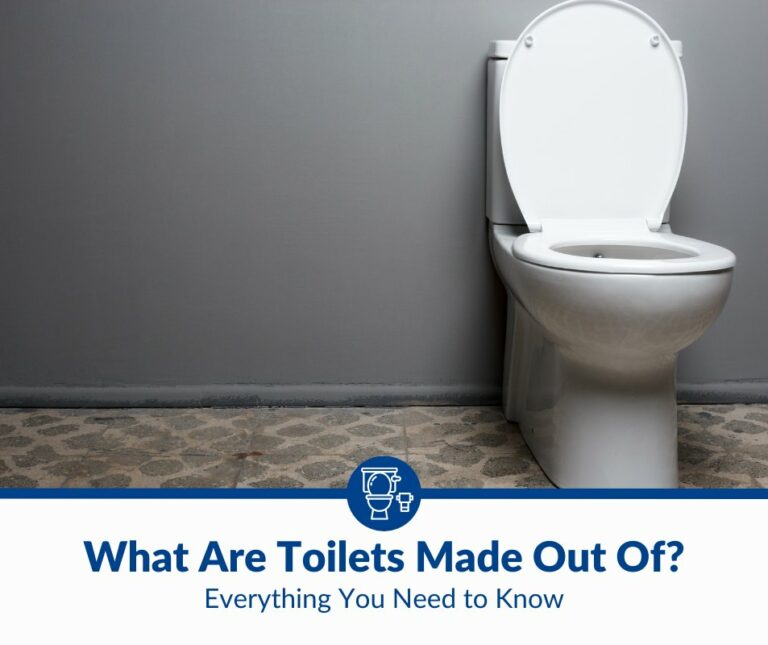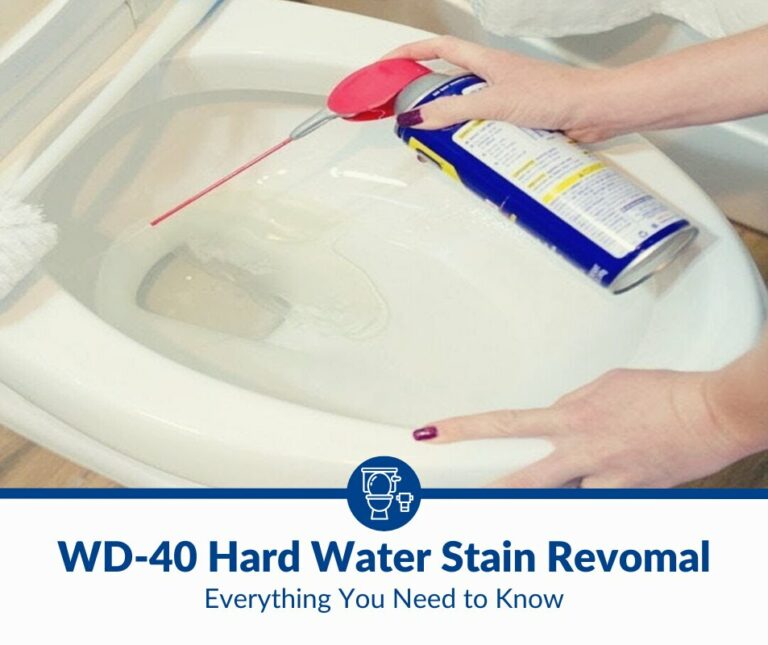Can You Flush Cat Litter Down the Toilet?
More than half a dozen types of cat litter are currently available, including biodegradable and flushable varieties. Subject to the type or variety you have for your cat, you may wonder if you can flush cat litter down the toilet.
In short, No you cannot flush cat litter down the toilet if it comprises clay, silica, or other materials that may clog the drain and sewer pipes. Biodegradable cat litter isn’t flushable if it contains clumping and hard materials, such as wood. Flushable cat litter is also a tricky proposition.
Ideally, you shouldn’t flush anything down the toilet apart from the 3 Ps (pee, poop, and puke), which is often referred to as 4 Ps with the addition of toilet paper (the regular variety, not thick ones). Read on as I explain why you can’t and the only instance when you can flush cat litter.
What Happens if You Flush Cat Litter?
The most common type of cat litter comprises clay, followed by silica. Whether you have a cat litter variety consisting of bentonite clay or crystals made of silica gel, you can’t flush it down the toilet.
Both clumping and non-clumping cat litter has similar effects on the toilet as the following:
If you flush clumping cat litter down the toilet, the clumps may swell and clog the drain pipe. Non-clumping cat litter may form sediment and partially or fully block the sewer line. You may also have a slow-draining toilet initially and eventually risk sewage backup.
Also, cat litter may damage the toilet’s drain pipe and the sewer line if the blockage is severe, increasing the stress on the plumbing system. Old pipes are particularly more vulnerable to such damage. Furthermore, cat litter can adversely affect a septic tank system.
But what about biodegradable and flushable cat litter? You must have seen these terms used by many brands. First of all, these two terms aren’t synonymous or interchangeable. Manufacturers can use these labels for advertising purposes, but they do provide specific flushing instructions.
Biodegradable Cat Litter Isn’t Flushable
Clay and silica aren’t biodegradable, but wood is. Yet, biodegradable cat litter comprising wood pulp, which is often pine, isn’t flushable. Wood pulp can clog a toilet, its drain pipe, or the main sewer line. If the cat litter has wood pellets, such a variety is definitely not flushable.
Many biodegradable cat litter compositions, like clay, silica, wood pellets, or pulp, aren’t flushable. One example is the bestselling CatSpot Non-Clumping Coconut Cat Litter, available on Amazon.com.
This all-natural cat litter is available in clumping and non-clumping varieties. Let me consider the latter in the context of flushing cat litter. The non-clumping CatSpot litter is 100% organic and made of only one component: coconut. Still, CatSpot doesn’t claim that this cat litter is flushable.
CatSpot has a simple illustrated guide recommending how to use its cat litter, including tossing the waste. You should empty the CatSpot litter box after 15 days of use and choose among the following options for disposal:
- Compost bin
- Flower beds
- Yard
Of course, you can dispose of the CatSpot cat litter in the trash. If a non-clumping variety should not be flushed, flushing the clumping variant of CatSpot or any other brand that uses natural or biodegradable materials is out of the question.
Cat Litter Is Harmful to a Septic System and Tank
Flushing cat litter down the toilet has several potential problems if you have a septic tank. The septic system doesn’t have the microbiome to deal with animal waste, so you shouldn’t flush dog poop down the toilet.
Bacteria and other microbes in your septic tank system develop a conducive environment in due course that effectively breaks down human waste, including feces and urine. Cat poop contains certain microorganisms, sometimes including hazardous parasites, which aren’t found in human waste.
While your septic tank’s microbiome isn’t capable of handling animal poop, flushing cat litter will also overwhelm the system with other waste and excess water. You’ll flush one or more of the following materials, subject to the type of cat litter you use:
- Clay
- Corn
- Orange
- Peanut
- Silica
- Wheat
Clay-based cat litter can wreak havoc in your septic tank, and that is after a highly likely problem of clogging your toilet’s drain pipe. Clay is malleable and super absorbent, a lethal combination that can block the toilet’s drain pipe completely.
If clay finds its way into your septic tank, it can pile up and harden while drying. Dried clay can be as hard as a rock, messing up the septic tank system. Apart from its microbiome, the septic tank can have other problems, including probable structural damage.
CatSpot’s coconut cat litter isn’t flushable. Similarly, corn and peanut shells or orange peels are not flushable, though they’re natural and biodegradable. Many such natural ingredients in cat litter can take months to decompose, and some require years to completely biodegrade.
Add to these excess loads the fact that your septic tank system isn’t primed to deal with these types of waste. Therefore, you shouldn’t flush cat litter down the toilet if you have a septic tank, and this recommendation also applies to flushable varieties.
Flushable Cat Litter Isn’t Readily Flushable
Generally, plant-derived cat litter is biodegradable and often claimed as flushable. However, whether or not you should flush plant-based cat litter or any variety that claims to be flushable depends on a few factors.
Let me use the example of Cat’s Pride Flushable Clumping Cat Litter (available on Amazon.com).
This bestselling, lightweight cat litter is flushable, but there are caveats you should note:
- As per the flushing instructions of Cat’s Pride, you shouldn’t flush more than 2 clumps at a time, which implies that the flushable cat litter will pose a problem for a toilet’s drain or sewer pipe.
- You shouldn’t flush this flushable cat litter down the toilet if you have a septic tank. I’ve already discussed the reasons, and even Cat’s Pride says so clearly on their packaging that you can’t flush the litter if your house has a septic system.
- If your local laws prohibit such a practice, you shouldn’t flush cat litter down the toilet, even a flushable variety. California, for instance, is one of the states that discourage flushing any type of animal waste, including cat feces, into any drains or toilets.
- All flushable cat litter varieties are tested in controlled settings, and those may not be the flushing capacity of your toilet. Consider the example of gallons per flush. Cat’s Pride has tested its flushable cat litter in toilets with a capacity of 1.6 gallons (6 liters) per flush, and that too ≤ 2 clumps.
What if you have a low-flow toilet or any flushing mechanism that uses only 1.2 gallons (4.5 liters) per flush or less? Also, you may not have only 2 or 1 clump of cat litter to dispose of down the toilet. Such caveats make flushable cat litter a tricky proposition, like the asterisk on such product labels.
Most Cat Litter Can Clog a Toilet’s Drain Pipe
Flushing cat litter down the toilet risks clogging the drain pipe or the sewer line. The blockage is unlikely to be in the toilet trap. Even if you have a clogged toilet trap, it may not be an easy fix because using a plunger or an auger may push the clogged cat litter farther down the drain pipe.
A clogged drain pipe will render your toilet dysfunctional, regardless of whether or not you have a septic tank. Of course, if you have a septic system, you definitely don’t want a clogged toilet or drain pipe due to the risk of sewage backup.
Even if you use flushable cat litter, you can’t control the precise dryness and hardness of 1 or 2 clumps when you flush them down the toilet. Many manufacturers state you shouldn’t flush hardened clumps even if the cat litter is flushable.
Residential toilets are at risk of clogging due to toilet paper and other stuff that you or others may drop or flush inadvertently. You don’t want to aggravate the risk factors by adding cat litter to the waste.
Slow Draining Toilet Due to a Partial Blockage
Suppose flushable cat litter doesn’t clog a toilet’s drain pipe or the sewer line. You may still have a partial blockage somewhere, and a partially clogged drain pipe may lead to a slow-draining toilet. Anything from cat litter to hair, toilet paper, and toys can cause a slow-draining toilet.
A slow-draining toilet due to cat litter stuck in the drain pipe or sewer line can quickly become a crisis if you don’t fix the problem. Eventually, you may have a completely clogged toilet and a sewage backup.
Toilet/Sewage Backup Due to a Full Blockage
The last thing you want is sewage backup or a toilet backing up into a shower and kitchen sink. If you have cat litter stuck somewhere close to a toilet’s trap, you may be exposed to some harmful microorganisms, such as the parasite Toxoplasma gondii, which is found in feline feces.
According to the CDC, millions of Americans contract toxoplasmosis, an infection caused by the Toxoplasma gondii single-celled parasite. This infection is why pregnant women and breastfeeding mothers are advised to avoid handling cat litter.
Conclusion
Considering all the risks, it’s not advisable to flush any type of cat litter down the toilet, regardless of whether you have a septic tank or use a flushable variety. Stay safe and dispose of cat litter in the compost bins, flower beds, trash, or yard.







